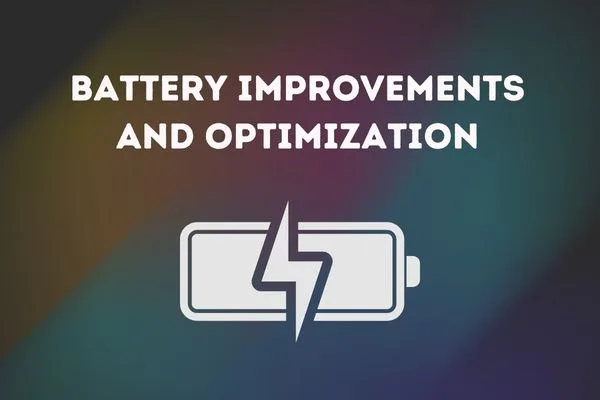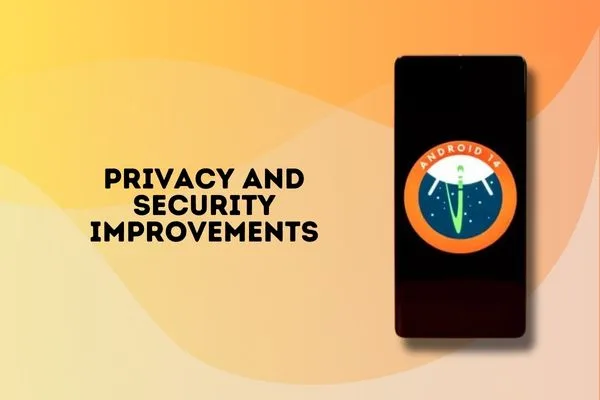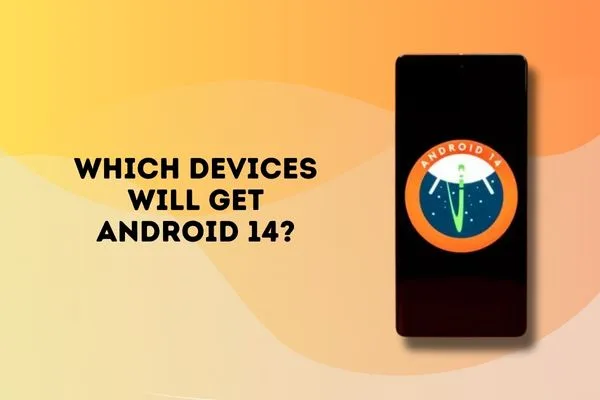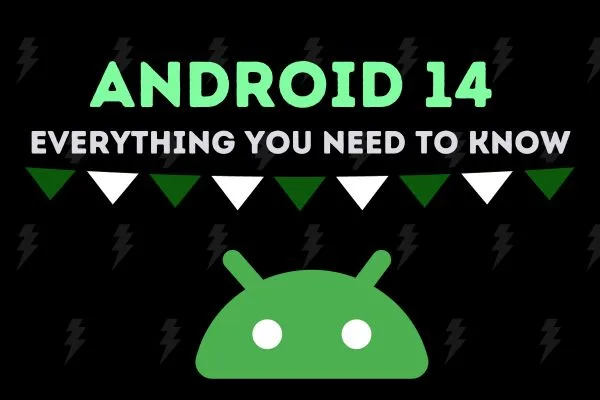On September 21, 2023, Google introduced Android 14 QPR1, a significant step toward the stable Android 14 release. This release, labeled as U1B1.230908, comes with a security patch from September 2023. While it includes various bug fixes, the full functionality of the new Feature Drop features may not be available yet.
The all-new Android 14 brings various enhancements, from privacy and security upgrades to user experience improvements. Let’s dive into the detailed review of what to expect from the new update.
Table of Contents
Android 14 – Release Date?
Android has a history of planned schedules that goes like this: In February, they share a sneak peek with developers to try out, and in March, they tweak it based on feedback. Then in April, they released a beta version for anyone who wants to test it. In May, they make it even better with Beta 2.
June is a significant month because they reach a point called “Platform Stability” in Beta 3, meaning it’s pretty solid for developers to work with. July and August continue with Beta 4 and 5, where they fix any last issues and make it as good as possible.
As for the final release, it usually happens in September or October. That’s when everyone can get their hands on the new Android 14. So, if you’re excited about it, look out for it around that time!
What’s New and What to Expect from Android 14
Android 14 is bringing a bunch of exciting features our way let’s take a look at some new features in brief:
1. Health Connect Integration: Health Connect, which gathers health data from various fitness and health apps, now comes pre-installed. This eliminates the need for manual installation and ensures automatic updates.
2. Custom Lock Screen: This update introduces extensive customization options for the lock screen, giving you control over its appearance and functionality.
3. Custom Wallpapers: The update offers multiple ways to create custom wallpapers, including an artificial parallax effect, emoji-based wallpapers, and AI-generated wallpapers (coming later).
4. Multimedia Enhancements: Android 14 adds support for lossless audio with wired headphones, 10-bit HDR for improved photo quality, and updates to Camera2 and CameraX extensions for better low-light photography.
5. Enhanced Security: The update enables you to restrict devices from falling back to insecure 2G standards and allows users to disable support for unencrypted cellular connections.
6. Bluetooth Device Selection: You can now specify the type of audio device when connecting Bluetooth devices.
New Android 14 With Battery Improvements and Optimization
Android 14 brings changes to improve your phone’s battery life. While not as major as some past features, it should still help your phone last longer.
Google is working on two things: how your phone handles background tasks and large file downloads. They want these tasks to use less power.

There’s also a new permission for some apps. Apps that aren’t clocks or calendars now need permission to set precise alarms. Google says this can use up your battery, so they want you to know when apps do this.
A useful feature making a comeback is “screen time since last full charge.” It tells you exactly how long your phone has been running since you last charged it, which is handy.
Lastly, Android 14 shows you more battery info, like when your battery was made and how many times it’s been charged. You can find this info in Settings > About Phone > Battery Information, but not all phones will show it.
Android 14 Privacy and Security Improvements

Android 14 brings many important privacy and security improvements, some of which might stir up discussions.
- No More Old Apps: Android 14 takes a firm stand against older Android apps, especially those designed for Android 5.1 Lollipop and earlier. These apps are often a target for malware because they lack modern security measures. As a result, you can’t install these super-old apps on Android 14. However, if you’re upgrading from a previous Android version, they’ll remain on your device.
- Selective Media Access: With this update, you gain more control over which photos and video apps can access. Instead of a simple “yes” or “no” to access, you can now choose which media they can see, giving you more privacy control.
- Enhanced PIN Privacy: You can turn off animations when entering your PIN, making it harder for prying eyes (shoulder surfers) to observe your PIN entry. The need for an “OK” button after entering your PIN is also eliminated, but this feature applies only to PINs with six digits or more.
- Data Sharing Transparency: With the new update it will keep you informed about app policy changes. If an app alters its permissions or privacy policies after you’ve installed it, you’ll receive a notification. This way, you’re always aware of any adjustments made.
- Under-the-Hood Security: Google is bolstering security against malware and exploits with changes to the intent system and dynamic code loading. While these aren’t user-facing, they add an extra layer of protection. Additionally, it enhances passkey support, bringing us closer to a future without passwords.
These updates prioritize your privacy and security, ensuring a safer and more transparent Android experience.
Exciting Android 14 Features for Improved User Experience
These upcoming Android 14 rumors promise enhanced functionality and user experience across a variety of areas.
- Floating Search Bar: A floating search bar for the Pixel Launcher could make its way with the update.
- Repair Mode: A repair mode, possibly involving factory reset simulation, is in testing for Pixel devices.
- Screen Search Gesture: Android 14 may introduce an all-new screen search gesture.
- Smartphone as Webcam: Now you can enable any Android phone to be used as a webcam without third-party apps, isn’t it cool?
- Satellite Connectivity: Native support for satellite communication, following announcements from Qualcomm, HUAWEI, and T-Mobile.
- Predictive Back Gesture: It might also include a predictive back gesture feature for improved navigation.
- Cloned Apps: Google is exploring the possibility of app cloning, allowing multiple accounts for a single app.
- Bloatware Finder: A feature named “Apps installed in the background” may help users uninstall hidden apps.
- App Pair Saves: Users may save app pairs for quick access on the home screen.
- Taskbar Enhancements: Potential additions to the taskbar, including a search bar and recent apps display.
Which Devices Will Get Android 14?
When a new Android update is released, the big question is, “Which phones will be able to get it?” Google has already revealed which of its Pixel phones are compatible with the early versions of Android. These include the Pixel 7, 7 Pro, 6a, 6, 6 Pro, 5, 5a, and 4a (5G). Usually, only Google Pixel devices are eligible for these early Developer Previews.

The Pixel 4a 5G and Pixel 5 won’t receive the Android 14 update due to their older Qualcomm processors, limited to 3 years of updates. Pixel 6 and newer models, including potential extended support for the Pixel 8, get 5 years of updates. The Pixel 5 will continue receiving updates until October. While the non-5G Pixel 4a wasn’t supported during the Android 14 beta, the Pixel 4a 5G will receive updates until November. The Android 14 QPR1 Beta 1 is rolling out gradually, taking up to a week. You can check for updates in Settings or manually install it using Google’s Android Flash Tool.
However, as the Beta versions roll out, more smartphone manufacturers may offer beta updates for their devices. In the past, companies like OnePlus, Nokia, Oppo, Xiaomi, Samsung, and others have allowed users to participate in beta testing for upcoming Android releases.
Additionally, there will be a generic system image (GSI) available for enthusiasts and developers. This GSI can be installed on devices that support Project Treble, but it’s a more advanced and complex process compared to simply enrolling in a beta program. It’s primarily intended for those who enjoy experimenting with their phones and for app developers seeking to optimize their software for the latest Android version.
You Might Also Like – How to install the Android 14 beta On Nothing Devices
Final Words
In summary, Android 14 promises significant improvements in security and customization, offering users more control over their devices. It enhances the overall mobile experience and is set to be a noteworthy update in the Android ecosystem.
How can I get Android 14 on my device?
If you own a Google Pixel device, you can participate in the Developer Previews or Beta programs. Other device manufacturers may offer beta programs as well.
Can I roll back to a previous Android version if I don’t like Android 14?
It’s possible to revert to a previous Android version, but the process can be complex and may result in data loss. It’s recommended to back up your data before attempting to downgrade.
Is Android 14 compatible with all Android devices?
Compatibility varies by device. Not all devices will receive the Android 14 update, and some older devices may not be supported.
How do I join the Android 14 beta program?
To join the Android 14 beta program, visit the Android Beta Program website (usually announced by Google during the beta release) and follow the instructions to enroll your eligible device.
